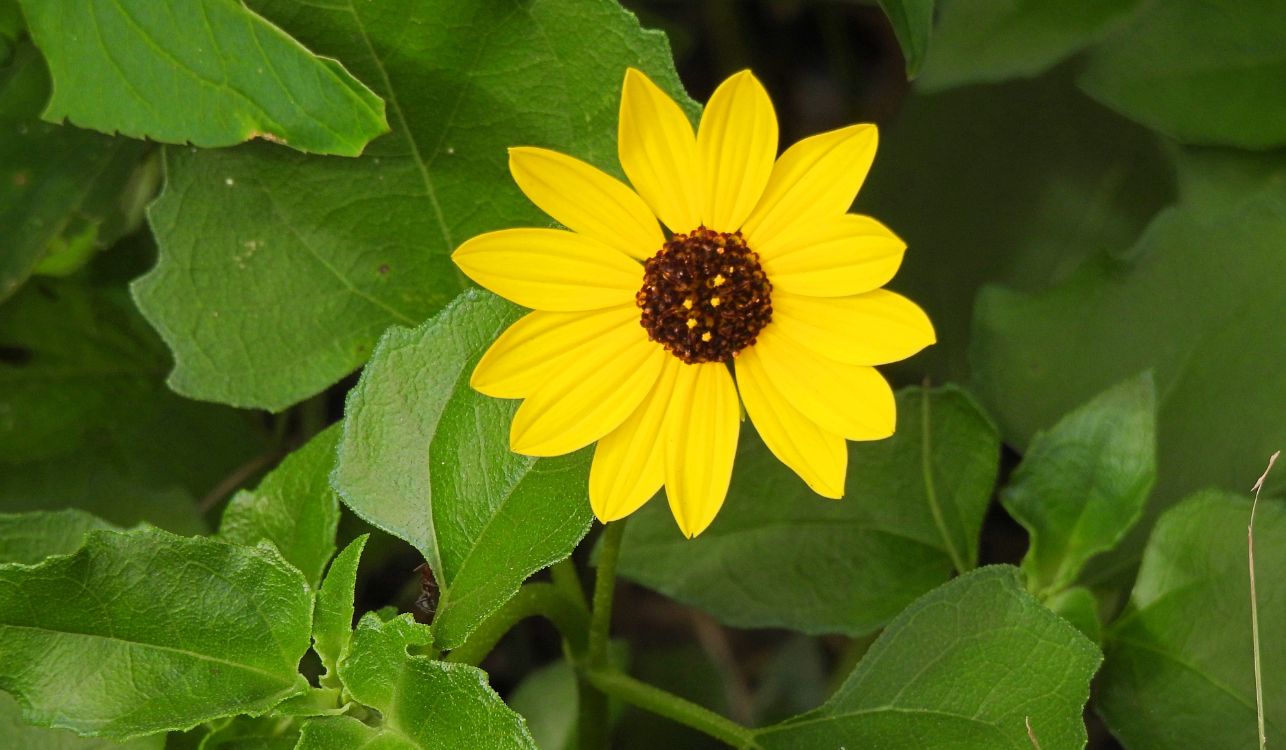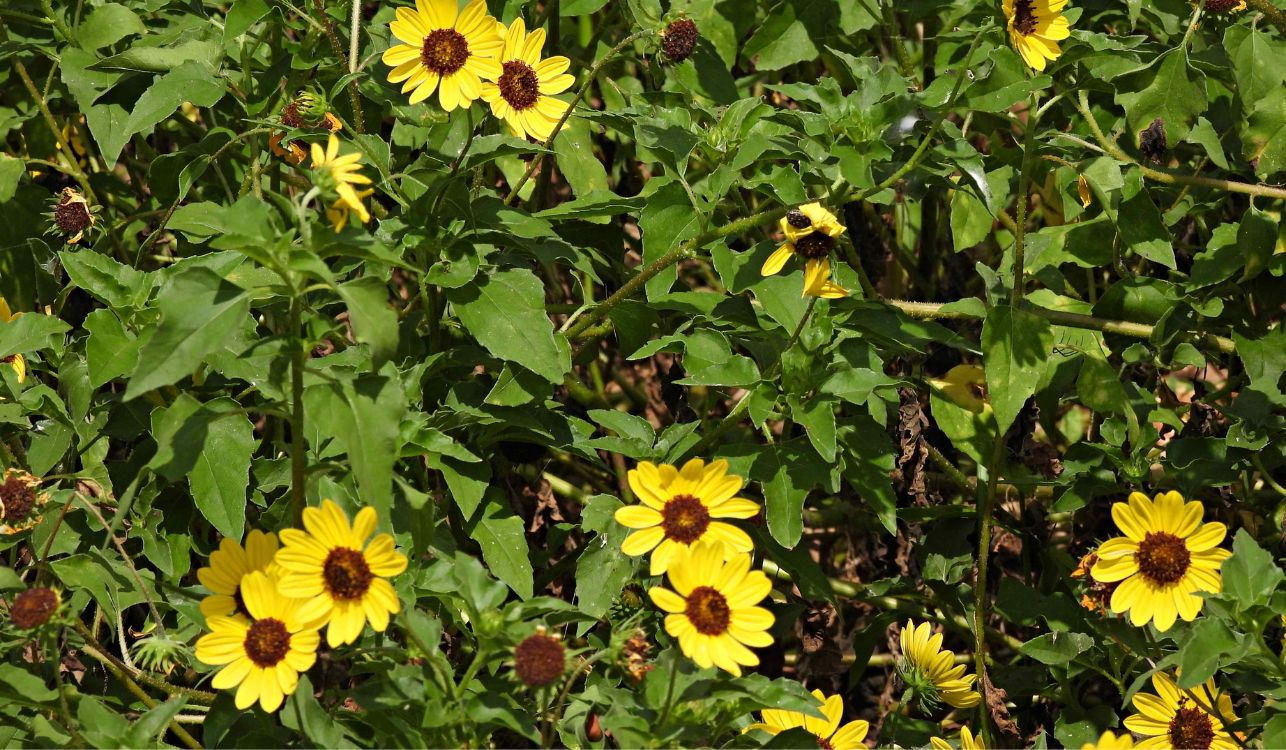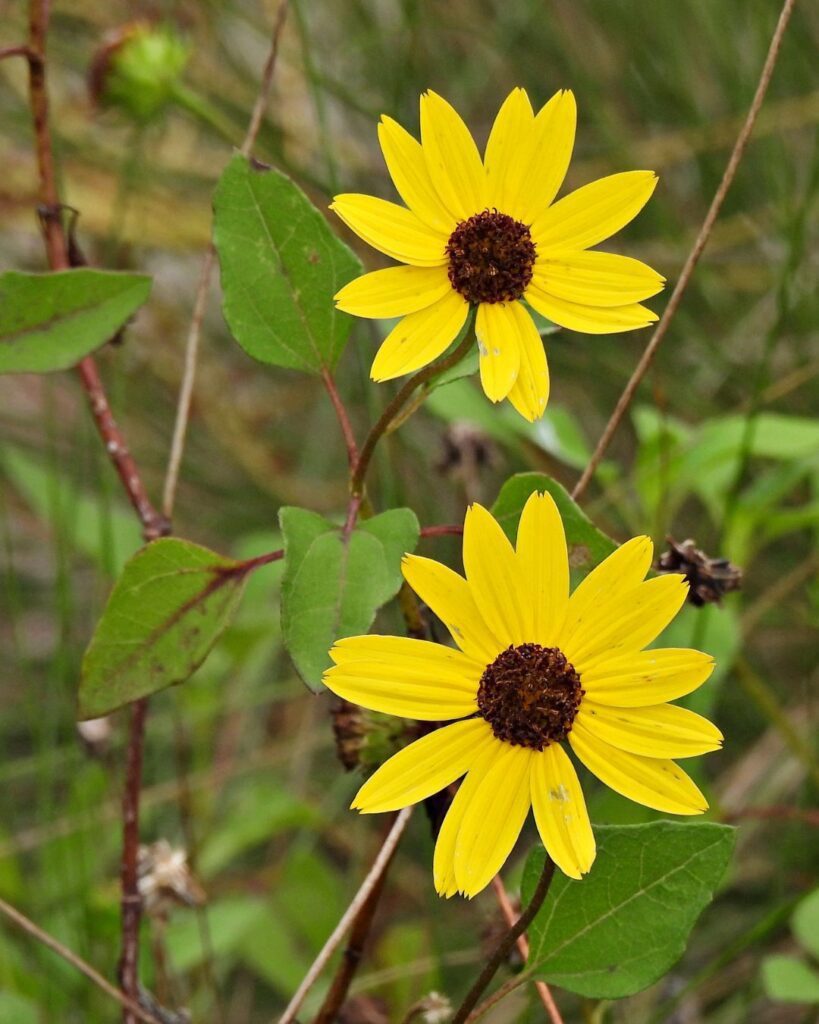The Helianthus debilis, known as Beach Sunflower, is a fast-growing perennial herbaceous plant that forms a dense mat covering the ground. It is native to coastal regions of the United States. Its stems are decumbent to erect, highly branched, and can be smooth (glabrous), hirsute, or pubescent. It features deltoid, dark green, rough, alternate leaves, approximately 10 cm (4 inches) long, long petioles, and serrated edges.

They serve as a perfect background for the small inflorescences that rise above the foliage on long peduncles. Flowering occurs from spring to autumn and can extend throughout the year in frost-free regions. Each of these lovely sunflower-like inflorescences is adorned with 10 to 20 golden-yellow rays surrounding a brownish-red center, like sunflowers, and has a diameter of about 7 cm (2.75 inches). There is also a cultivar with cream-colored flowers, H. debilis ‘Ice Cream.’
Beach Sunflower is especially attractive to bees, butterflies, and birds, making it a wildlife highlight in the landscape. This plant spreads rapidly through stolons, making it an excellent ground cover option. In areas with harsh winters and intense cold, it may die, but Beach Sunflower is very prolific, so you’ll see new seedlings in spring thanks to its high self-seeding ability.
Furthermore, this wildflower is incredibly low-maintenance, salt-tolerant, and drought-resistant, making it an ideal choice for seaside locations. Its versatility is remarkable, as it works well in mass plantings, borders, and can even cascade beautifully on walls or in pots. An interesting ecological feature is that Beach Sunflower helps stabilize dunes and sandy soils due to its deep root system, which includes a taproot and several lateral roots.

Its flowers also last quite a while after being cut and are suitable for creating beautiful floral arrangements and bouquets. So, if you want to add beauty and life to your garden, Beach Sunflower is an excellent and versatile choice. It brings a cheerful and rustic atmosphere to your landscaping project.
It should be grown in full sun, in well-drained soil, preferably sandy, and enriched with organic matter. It appreciates regular watering and is not tolerant of prolonged drought. In subtropical to temperate climates, it will behave as an annual, perishing with the onset of cold, but it has the ability to repopulate flowerbeds through self-seeding. In hot tropical climates, it’s advisable to prune it to control growth, renew foliage, and stimulate new blooms. Fertilize annually in spring. It multiplies easily from seeds and cuttings.

